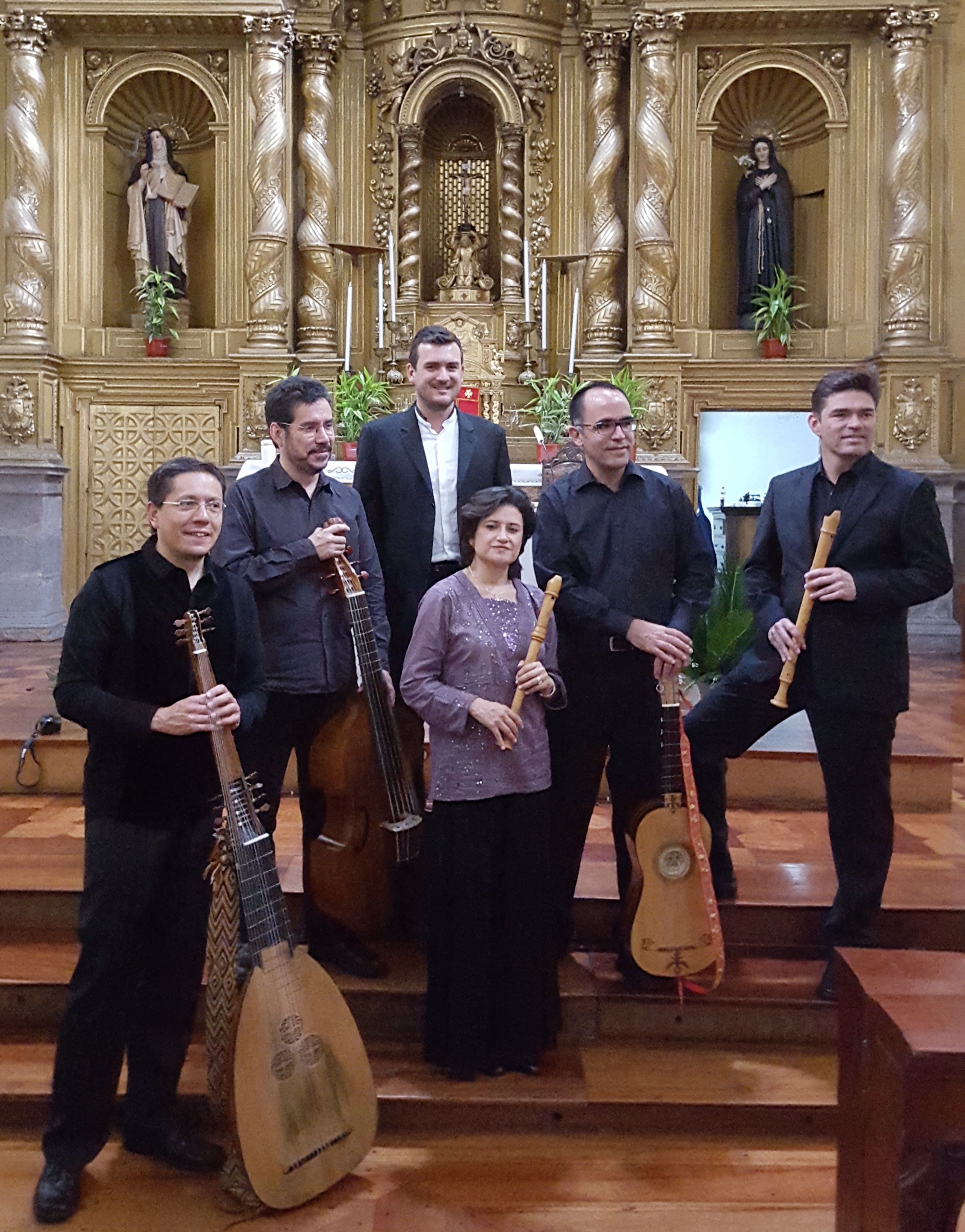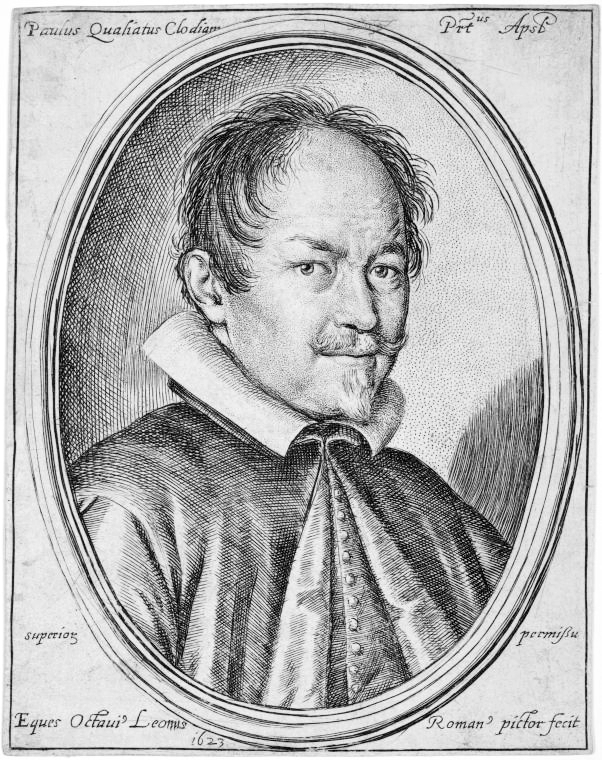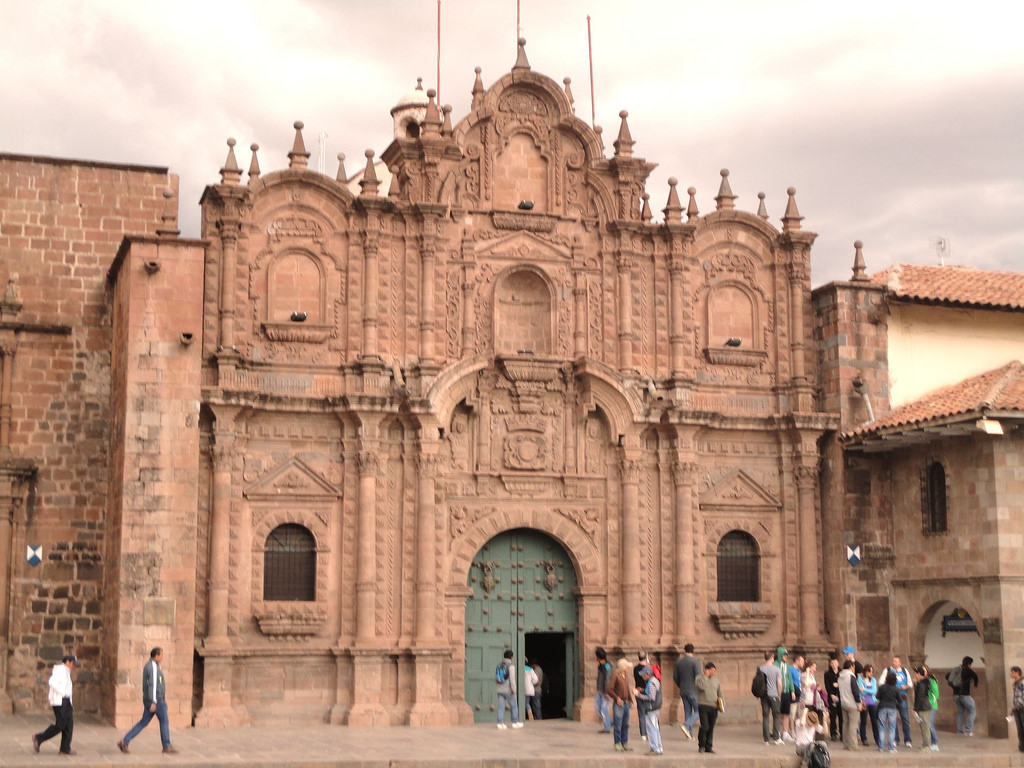Colombian Early Music Group Esfera Armoniosa to Make North American Debut
 One of early music’s great joys is the archeology it entails—the discovery and reconstrucion of lost musical worlds, and quite often bringing hidden treasures to light. Nowhere has this been more true over the past half century than in the rediscovery of the Latin American baroque, led by the pioneering scholarship of Robert Stevenson in the 1960s. It is a wonderful corpus, ranging from prima practica (really late Renaissance) motets of Franco and Llenas through the rollicking villancicos of Araujo, Fernandes, and Gutiérrez de Padilla—many incorporating native American, African, and other ethnic characteristics—to the Italianate and Classical works of later composers like Ignacio Jerusalem.
One of early music’s great joys is the archeology it entails—the discovery and reconstrucion of lost musical worlds, and quite often bringing hidden treasures to light. Nowhere has this been more true over the past half century than in the rediscovery of the Latin American baroque, led by the pioneering scholarship of Robert Stevenson in the 1960s. It is a wonderful corpus, ranging from prima practica (really late Renaissance) motets of Franco and Llenas through the rollicking villancicos of Araujo, Fernandes, and Gutiérrez de Padilla—many incorporating native American, African, and other ethnic characteristics—to the Italianate and Classical works of later composers like Ignacio Jerusalem.
This month, the renowned Colombian early music group Esfera Armoniosa makes its North American debut with a very rich and lively sampling of this literature. Performances will take place at 8:00 p.m., Saturday April 22, on the Trinity Chamber Concert Series in Berkeley; 7:30 p.m., Saturday April 29, at Holy Cross Church in Santa Cruz as part of the Santa Cruz Baroque Festival; and 4:00 p.m., Sunday, April 30, at St. Mark’s Lutheran Church in San Francisco.
Bay Area recorder players know the ensemble’s charismatic director, Claudia Liliana Gantivar, but the other performers—fellow recorder player Sergio Llano, tenor Andrés Silva, baroque guitarist Julián Navarro, gambist Alfonso Correa, and lutenist Sebastián Vega Q.—all are Colombian musicians trained at European early music conservatories working professionally and teaching at national universities. Their debut tour is thanks in part to the generous support of the Colombian Ministry of Culture.

Established in 2006 by Ms. Gantívar, Esfera Armoniosa takes its name from the collection of pieces of the early 17th-c. Italian composer Paolo Quagliati, whose compositions are written for voice, an obbligato melody instrument, and basso continuo, a typical vocal-instrumental format for the period known in music history as Seconda Pratica, thus referring to the baroque style. They have performed extensively in Colombia and neighboring Andean countries. In early 2011, the group released its first recording, Io vo Cantar, featuring Italian music from the early baroque, and in December, 2016, their second, Que Dulce Violencia, which includes European and colonial American composers influenced by the Spanish baroque music. It is this CD which forms the basis of their upcoming performances.
The following notes on their program are taken from the booklet accompanying the CD Que Dulce Violencia (Esfera Armoniosa, 2015). They were written by Carolina Conti and are supplemented here by Claudia Liliana Gantívar.
* * *
The most important location of the Spanish empire in colonial South America, along with Mexico, was Peru. The seminary of the Cathedral of San Antonio Abad, founded in Cuzco in 1598, was recognized for its musical activity and teaching of polyphony and instrumental practice. The seminary’ archive contains a rich collection of manuscripts after 1600, such as Spanish and Peruvian compositions that include villancicos, tonadas, and jácaras, as well as liturgical and dramatic works, such as eulogies, comedies, and sainetes. Of course, many of these compositions are attributed to anonymous authors. One example is Un juguetico de fuego, a piece dedicated to the Virgin that gives an account of the fireworks in Cuzco that celebrated the swearing of King Philip V at the beginning of 1702. It is very possible that the title alludes to the rare ‘juguete’ form, a festive song that is a variation of the villancico.

In addition to the vocal repertoire, however, with its various possibilities, the instrumental repertoire is an example of the richness of Spanish music, as seen in the compositions of Selma, Murcia, and Guerau. Bartolomé de Selma y Salaverde was born around 1595 to a family of wind instrument makers in Cuenca. It is known that he was an Augustinian monk and that he was a virtuoso bassoonist in the court of Archduke Leopold of Austria in Innsbruck between 1628 and 1630. His pieces for solo bassoon were the first to be published for the instrument and his collection, Canzoni, fantasie et correnti da suonar, is one of the only models of instrumental music in Spain in the seventeenth century. It contains pieces for one, two, three, and four parts and basso continuo that demonstrate a variety of expressions, as well as contrasts in tempo and dynamics. This collection was published in 1638 in Venice. It is possible that the composer worked there, judging by the predominance of the Italian style in his pieces. Selma dedicated the work to Carl Ferdinand, the son of King Sigismund III of Poland and Sweden, and bishop of Breslau.
All evidence indicates that Santiago de Murcia was also from a family of musicians and instrument makers. It is believed that he was born in Madrid in 1682 and that he died around 1740. He was the best known guitarist in the Hispanic world. At the beginning of the eighteenth century, he appears as the guitar teacher of Queen María Luisa Gabriela de Saboya, the wife of Philip V, who also hired Antonio de Murcia, probably the brother of Santiago, as his personal guitar maker. His known works include “Resumen para acompañar la parte con guitarra” of 1714 and three anthologies of manuscripts that together constitute a fundamental treatise on baroque music for guitar: the Códice de Saldívar, Pasacalles y obras de guitarra, and Cifras selectas de guitarra. The latter, which dates back to 1722, is the oldest manuscript found in America dedicated to the guitar and it was found in Chile in 2006 by the musicologist, Alejandro Vera. The Códice de Saldívar n. 4, to which the Fandango, heard on this program, pertains, is a manuscript in tablature for five-course guitar that takes its name from the musicologist, Gabriel Saldívar, who discovered it in Mexico in 1943. In addition to French dances and minuets, the manuscript includes variations on dances, such as the jácara, villano, mariona, gallarda, and españoleta, and it is the first source of fandangos, jotas, and seguidillas that became the indisputable hallmark of Spanish musical culture. Also appearing in these manuscripts are the first written examples of African and American instrumental music, such as cumbés and zarambeques. The book, “Pasacalles y obras de guitarra por todos los tonos naturales y accidentals”, dated 1732, of which is included here Obra del séptimo tono, contains numerous suites in the French style and other pieces of high difficulty that, in spite of their improvisational nature, are carefully constructed.
From the Spanish guitarist Francisco Guerau we have adapted for Esfera Armoniosa its Xácaras originally for Guitar, and includes inside the manuscript Poema harmónico compuesto de varias cifras por el temple de le guitarra española (Madrid, 1694) includes 27 compositions and an introduction to the principles of tablature notation and ornamentation. The pieces are all variation sets of various types. Most are passacalles, but there are also other typically Spanish dances (jácaras, marizápalos, españoletas, folías etc.). The Poema is comparable in importance to the works of Gaspar Sanz and Ruiz de Ribayaz for Spanish guitar music of the period,
Between the great vocal Spanish Baroque composers we include in this program the Toledano, Sebastián Durón, knew Italian music very well and its influence is evident in his compositions. It is thanks to him that influences of the Italian style arrived in Spain, a fact that earned him some criticism. Active in Seville and Valencia, Durón worked in the Cathedral of Palencia between 1686 and 1691. The cathedral’s archive preserves pieces of his authorship, such as Cantada al Santísimo Ay que me abraso de amor en la llama, which is of a religious nature. After his time in Palencia, Durón joined the Royal Chapel in Madrid as an organist in 1691, remaining there until 1706 when he was forced into exile for opposing the new king Philip V. He spent the rest of his life in Bayonne, in the south of France. We include as well, Corazón, causa tenéis, whose main themes are repentance and fear of God, is a beautiful soloist song for a vocalist and flute.
Further evidence of the transition of the tono humano to the cantada humana is found in Juan Lima Serqueira, the Portuguese harpist, guitarist, and composer considered to be the most prestigious theater musician of his time in Spain, demonstrated by the appearance of his name in documents at the end of the seventeenth century. He composed countless songs for autos sacramentales, some with texts by Calderón de la Barca, for important companies in Granada and Madrid, the city where he died around 1726. He was also the author of comedies, zarzuelas, semi-operas, and compositions for the court. His cantada, O corazón amante, is a hybrid work that includes the recitative-aria format of the cantata, as well as a refrain, which was commonly used in tonos humanos.

We include two works in this program from the Archive of Bogotá Cathedral, which may have the oldest music manuscript in South America. One is the composition by Alonso Torices, Toca la Flauta, a negrillo, or Afro-Hispanic Christmas carol. Written in African dialect and set to a vigorous ternary rhythm. it is a vivid character piece featuring a constant dialogue between soloist and choir, in this case is represented by the recorders. The work was used as a responsory to lesson VIII, Pastores loquebantur, within the Christmas Service. Torices was a Spanish composer who worked in Málaga and Zaragoza around 1672; his works are preserved in the Bogotá and Guatemala City Cathedral archives. The second work is the Lamentation of Salvador Romero, an 18th-century composer about whom we know very little, other than that he was the maestro de capilla in Bogotá cathedral between 1759 and 1767.
From the Guatemala cathedral archive we will perform Rafael Antonio Castellanos, Vaya de Xácara amigos. Castellanos served as assistant to his uncle Manuel José de Quiroz at Antigua Cathedral, 1745–65, and then as maestro de capilla at Guatemala City Cathedral. His pieces are characterized by well-judged, unambitious harmonies and effortless melodies, incorporating both Spanish and Italian elements. Many of them center on Christmas or some other religious observance. A xácara is an old ballad or dance tune. This Vaya de Xacara amigos was written to be sung at celebrations of the conception of the Virgin of Guatemala.
From Fray Manuel Blasco, we include La Chacona, me piden vaya. Blasco was a great composer native to Bogotá; the majority of his works are preserved in the Cathedral archives of that city. When he left his post in 1696, he moved to Quito, where he worked as maestro de capilla and became the city’s most eminent composer. La chacona is a Chirstmas villancico. It has a bright, ternary rhythm, liberally mixed with hemiolas, giving the piece a joyful, dance-like character.
For more information or tickets to these concerts, please check the respective websites of the presenters and/or venues: www.trinitychamberconcerts.com, http://www.scbaroque.org, or http://www.stmarks-sf.org/events/music/.












